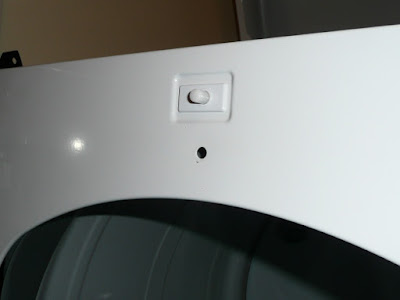Recently I've had to upgrade the rubber drum wheel rollers and replace a worn out belt tensioner pulley in my Samsung dryer model DV48H7400EW.
I sourced parts and ended up on Amazon. The 'Dryer Upgrade kits' caught my eye, which includes new drum rollers, tensioner pulley and it's spring and a new belt. I purchased the kit and was happy to have my dryer back in service again. Or so I thought.
This new belt-- which looks superb...'High Quality'. Don't be fooled.
This is the belt which came in the kit and it looks just as the one in the photos. I thought it would be a high quality belt. Boy was I wrong. In this case, looks were DEFINITELY deceiving.
Immediately after reassembling and turning the dryer on, I was met with this awful smell of what was extremely similar to marijuana (cannabis/dope) burning. The heat of the dryer brought out 'the smell of the rubber's composition' was my initial thought. It was awful!! The smell filled the dryer drum, tainted our clothing and permeated into our residence.
The more I used the dryer, the stronger the smell became. I thought the smell may have been coming from the belt alone but wasn't 100% certain because I had replaced the drum rollers too. But it didn't take me long to discover that others have had this same issue with some of the newer dryer belts on the market emanating a smell very similar to marijuana.
SO, I sourced another belt, but this time made certain to ask questions before I purchased.
I visited some of my older friends at ApplianceZone.net this time. I wasn't going to go through this again. Understanding that 'an appliance specific' parts distributor is more than likely going to have vetted part suppliers, I was most likely safer to go this route than to attempt an Amazon purchase again. Therefore, I chose to speak with the individuals at Appliance Zone and they assured me they had not received had any complaints with their belts but had heard my story before from others.
Thankfully, the replacement from them rectified my issue. No more smell of burning marijuana. I couldn't trash that old belt fast enough.
My synopsis-- some foreign country, most likely China is using hemp fibers for reinforcement of their rubbers to make these dryer belts. These belts do not give off any such smell when handled fresh out of the package (new) until heat from the dryer comes into the equation. Then, your day is about to be disrupted. Of course, when you remove the used dryer belt you can smell the residuals along it's entirety thereafter.
Do yourself a big favor....perhaps steer clear of all the 'dryer upgrade kits' on Amazon with photos similar to those found above. I'd even ask questions in the comment section before I purchased a single belt for dryers too, if I was set on using Amazon. Amazon doesn't have a vetted entry process into their sale's platform which prevents all of these subpar parts from entering our space.
Whatever you decide to do-- please ask questions before you buy. My share to save you time, irritation and having to take your dryer apart multiple times.


































































